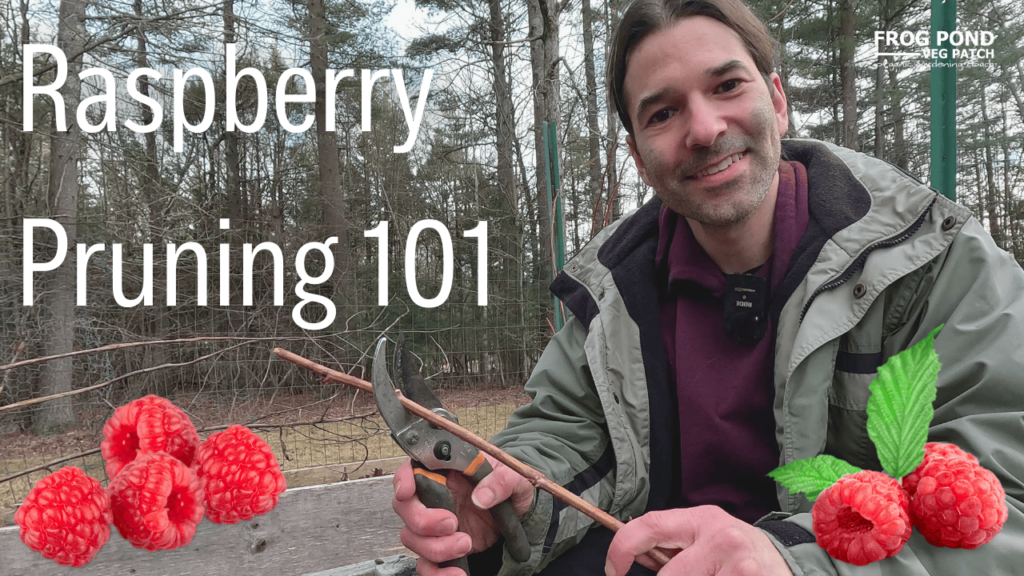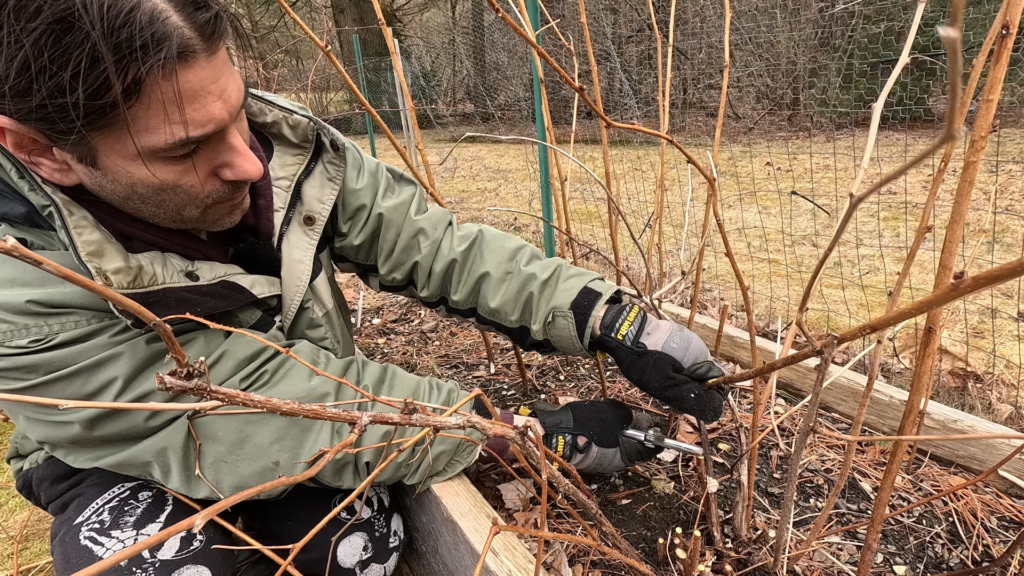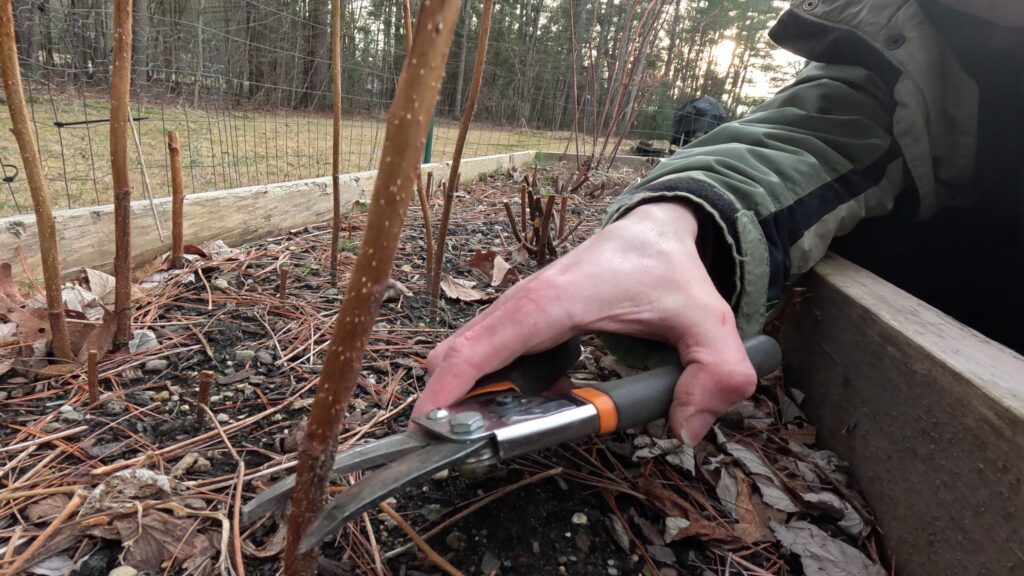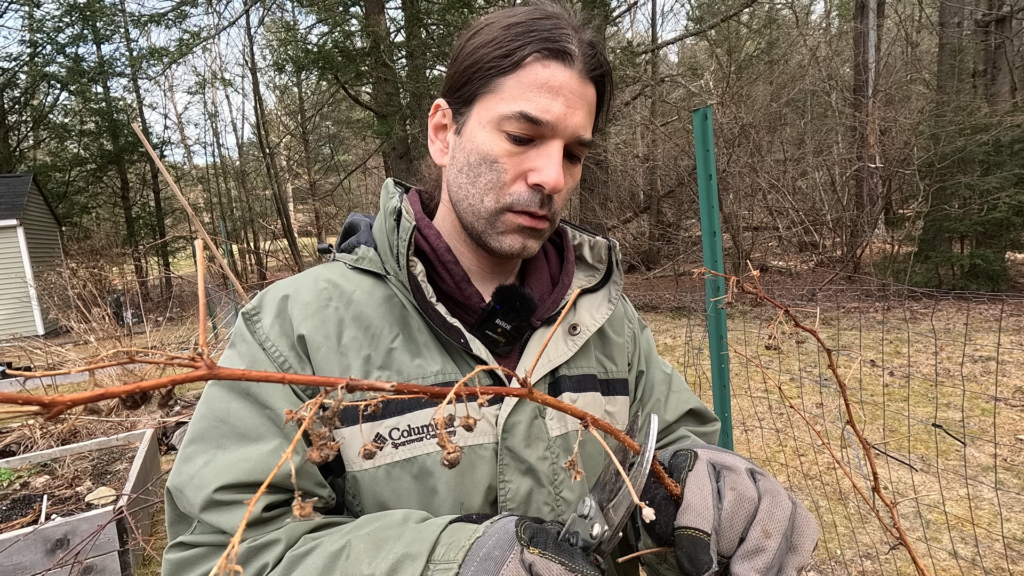One of the best ways to maximize your raspberry harvest is through proper pruning techniques. With the right approach to prune raspberries, you can enjoy fresh raspberries throughout the growing season.
Understanding Your Raspberry Types
Before you start pruning, it’s essential to know whether you have June-bearing or fall raspberries (which can be ever-bearing). Your pruning strategy will depend on the type of raspberries you have.
- June-bearing raspberries: Produce one crop in mid-summer on second-year canes
- Fall raspberries: Produce one crop in late summer/fall on first-year canes.
- Ever-bearing raspberries: These are fall raspberries which can be pruned to encourage encourage harvests on last year’s canes.

Spring Raspberry Pruning Tips
Early spring is the perfect time to check on your raspberries and prune them to keep them healthy and strong. Here’s what you need to do:
- Remove all dead, damaged, or diseased canes at ground level, regardless of the type of raspberries you have. This is important for the overall health of the raspberry plant.
- Thin out any spindly, weak canes or canes that are not growing the in direction that you want. Select for the strongest healthiest canes.
June-bearing Raspberries
June-bearing raspberries (also referred to has summer-bearing) will produce fruits on last year’s canes. To help get the best crop, make sure that you’re selecting for canes that are strong and healthy by pruning out anything that is spindly, broken or weak-looking.

Prune out all canes that produced fruit last year. These canes die back and will not produce fruit again. By pruning them out of the plant now, you help to open the structure of the plant, allowing in more light and air – all great for the health of last year’s canes.
Fall Raspberries
Fall raspberries will produce fruit this year, in the fall, on new canes that start growing now in the spring. Pruning fall raspberries is fairly straightforward: Just cut back all the existing canes (those that grew and produced fruit last fall). Cut them back to 1-2″ from the ground. And that’s it!

Now, if you want to prune your fall raspberries so they produce additional crops during the season (aka ever-bearing), then you don’t cut back last year’s canes. Instead, look at those canes and find where they produced fruit. Then prune back to a new, healthy-looking bud. New growth will form and produce raspberries this season, in addition to a crop in the fall from new canes this year.

Strategy for Extended Harvests
To get raspberries throughout the season, try these techniques:
- Plant both summer-bearing and ever-bearing varieties.
- Prune half your ever-bearing raspberries for fall fruiting and half for summer fruiting.
- Choose varieties with different ripening times.
- Maintain proper spacing between plants for maximum yield.
Pro Tip: Keep detailed records of which varieties perform best in your garden and when they produce fruit. This will help you plan for continuous harvests in future seasons.
COMMENTS